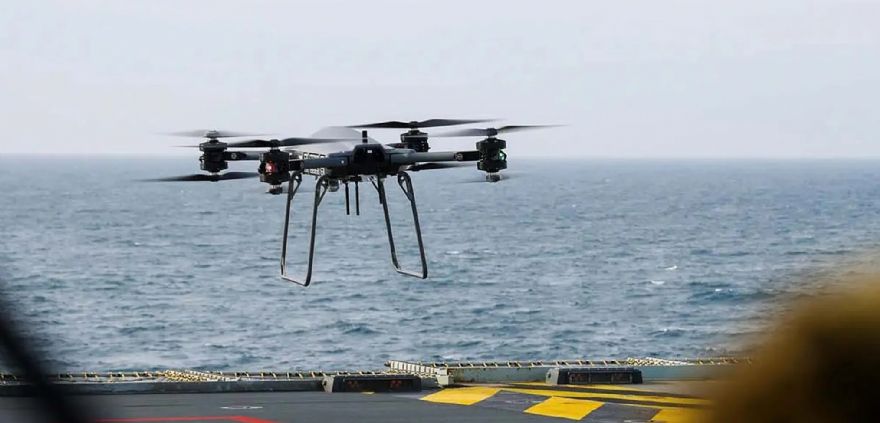
When last month the UK Carrier Strike Group deployed to the Indo-Pacific, the flagship HMS Prince of Wales took a fleet of nine powerful octocopter drones for remotely moving items — food, packages from home and engineering parts —between the ships in the group. The trial of the new systems alongside crewed aircraft is intended to free up the more expensive helicopters to focus on their primary role of protecting the task force from danger on its mission to the Far East.
The drone specialist 700X Naval Air Squadron from Royal Navy Air Station Culdrose has sent 12 sailors to operate the nine air systems, initially from three ships in the group. Lieutenant Matt Parfitt, a drone flight commander with 700X NAS, said: “There is a statistic from previous carrier strike deployments that shows 95% of stores transferred weigh less than 50kg.
“In the past we would have used a helicopter if a part was urgently needed on another ship. This time, we are going to use a remotely piloted, uncrewed system instead. We are aware that we are trialling something new; and because it has not been done before on this scale, we know the eyes of the fleet will be on us.”
Rapid advancements in drone technologyWith eight 2ft-long rotor blades, an endurance of 20-40min, a top speed of 60mph, and the ability to lift up to 68kg, the Malloy T-150 — built by the private company Malloy — is not just your average drone. It needs a team of two (one remote pilot and a second to monitor the drone’s command unit) and can be flown manually or autonomously to designated waypoints with an underslung cargo; and the rapid change in the use of drone technology that is driving the Royal Navy to adapt new systems and practices at record speed is achieving changes that would normally take years to now being done in months.
Lieutenant Parfitt added: “We only got these Malloy systems last August. Since then, we have had to learn how to fly and maintain them and how to integrate them into the crewed aviation space. That requires a lot of regulations and documentation to be done. These systems have only really been used over land before, so we are also having to understand how we can operate and maintain them in the maritime environment.
“Everybody worked at maximum speed to get everything ready, which was challenging and difficult, but that is is exactly the sort of thing we joined the navy to do and why we joined this squadron. Moreover, the 700X NAS is pushing the boundaries of naval practice, drawing sailors from different branches of the navy to build a corps of dedicated and qualified drone personnel.”